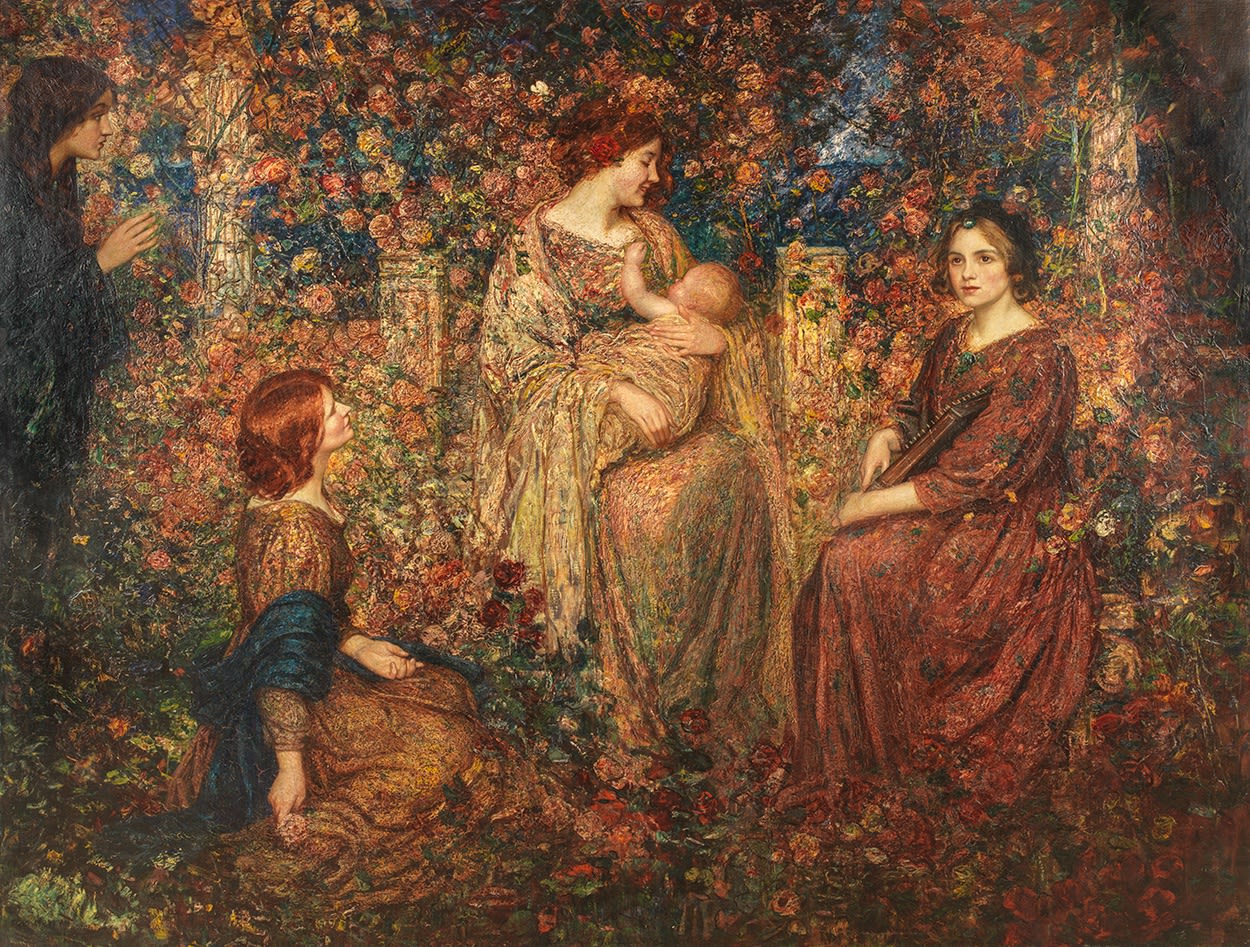Thomas Mostyn (1864-1930)
Provenance
F. J. Elliott, Esq, 1914;
H. J. Cornish Collection;
presented to Hampstead Public Libraries, Local Collection, 1928;
Sotheby's Belgravia, 20 March 1979;
Charles Young Fine Paintings, 1979
Exhibitions
Royal Academy, 1912, no 208Paris Salon, 1912
Grafton Galleries, The Mostyn Exhibition, 17 July - 2 August 1913, no 45
Laing Art Gallery, Loan Collection of Works by Tom Mostyn and Selected Modern Pictures, February 1914, no 69
Literature
The Evening Mail, 13 May 1912, p 4
The Scotsman, 7 may 1912, p 5
Manchester Courier and Lancashire General Advertiser, 18 July 1913, p 5
Mahlstick, 'Current Art Topics', Fine Arts Journal, October 1916, vol 34, no 9, pp 461-2, ill 462
Amanda Kavanagh, Tom Mostyn: 'A Full-Blooded Romanticist', pp 135-136, ill fig 3, p 136
The Studio, 'The Royal Academy Exhibition, 1912', vol 56, 1912, p 14
Pall Mall Magazine Extra, ill p 75
This luscious and exuberant painting was shown at the Royal Academy in 1912, then the following year at the Paris Salon and in a one-man show at the Grafton Galleries. Mostyn’s ‘colour is a joy to the eye and very often its riot is bound together in a design through which the conception of the poet shines’, praised the critic of the Manchester Courier in 1913, although the critics were divided over Mostyn’s bold approach. In Paris, the critic of Le Journal des Arts commented that Mostyn ‘wants to sing Monticelli’ (1912). Adolphe Monticelli, so loved by Cézanne and van Gogh (and so hated by Sir Roy Strong), was Mostyn’s example, for like him he filled his canvases with colour – loading and scraping, roughening, smoothing and staining.
Mostyn studied first at the Manchester School of Art and then from 1893 at Herkomer’s Art School at Bushey near London. His earlier work is much in the later manner of his master Herkomer: figure subjects with a social agenda, carefully painted portraits and ‘direct’ landscape painting done out-of-doors. But The Child was a pivotal picture for Mostyn, who was 48 years old when he painted it just before the First World War. Not only was it his last major ‘predominantly figurative work, but with its emphasis on the ornate and sumptuously coloured garden setting, it foreshadowed a theme which was to preoccupy him until the end of his life’ (Amanda Kavanagh, ‘Tom Mostyn: A Full-Blooded Romanticist’, Antique Collector, 1989, pp 135-136, ill p 136). After the War, which seems to have had a deep effect upon him, he moved to Devon and thereafter painted dreamlike, peaceful mystical pictures known as ‘enchanted gardens’, rendered with heavy impasto, and sumptuous with colour. As a critic for the Fine Arts Journal observed, ‘Mr. Mostyn’s work is very abruptly divided into two categories, one realistic, photographically matter-of-fact, as in his portraits, the other as in the works shown here - dreamy, fantastical, imaginative - in the first case the colour is extremely sober, in the latter the painter revels, almost riots, in the fullest possible gamut of his palette. One has no difficulty in deciding in which section of his work the painter’s heart lies. Occasionally we find the two combined, as in the beautiful picture “The Child”, where the highly modelled heads of the figure contrast so charmingly with the vigorous suggestion of flowers and foliage of the background …. Another frequent feature in his compositions, and one very popular at the moment, is the use of columns – or of trees giving the same spectacular effect – running out of the pictures. It is really a device borrowed from the stage and the scene-painters’ repertoire, and in a somewhat theatrical way it imparts an air of romance.’ (‘Mahlstick: Current Art Topics’, Fine Arts Journal, pp 461-2)
The Maas Gallery, 6 Duke Street, St. James's, London, SW1Y 6BN
+44 (0) 20 7930 9511 | mail@maasgallery.com
This website uses cookies
This site uses cookies to help make it more useful to you. Please contact us to find out more about our Cookie Policy.

